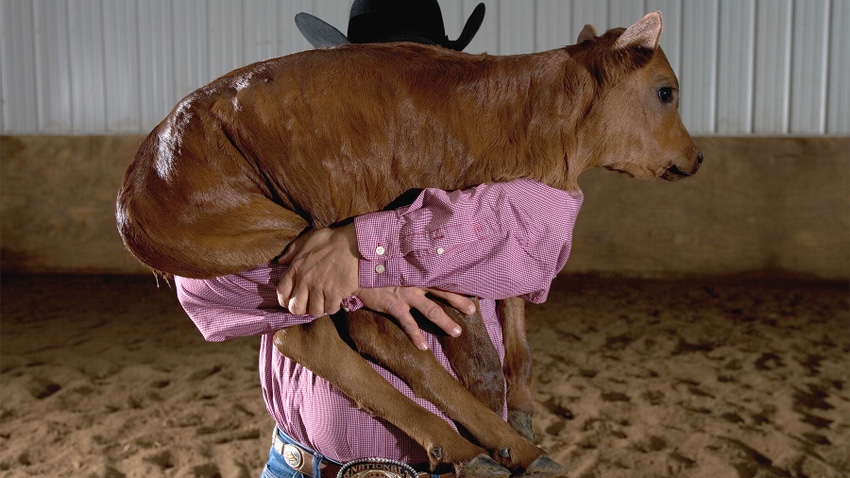March 25, 2024

by Wesley Tucker
After a hard day on the farm or wrestling a 500-pound calf, have you ever thought to yourself, “Am I getting too old for this?”
According to the 2022 Census of Agriculture, the average age of the American farmer is 58.1, but 38% of farmers are already 65 or older. When should a farmer consider slowing down or retiring? Do those words even exist in the farmer dictionary?
Like many of you, my wife and I both have off-farm jobs. Toss in a teenage daughter with FFA activities, and finding a weekend to work cattle becomes nearly impossible.
Finally, one weekend we descended on the working chutes for the annual activity. Saturday went relatively well, but by Sunday, I was feeling it.
Somehow my wife and I both got kicked, and not by one another. So, that afternoon as I hobbled around, I caught myself questioning my age and ability to farm.
I recently turned 50, so hopefully I have many good years ahead. According to the ag census, I’m still a youngster. But it made me think of the many cattle producers who walk into my office and say, “I just can’t do the manual labor anymore. I need help.”
Then there is the follow-up question: If I get my grandson, neighbor kid or someone else to help me, am I going to have to give them 25% or 50% of the calf crop?
Most producers think it will require a big chunk of the calf check. Initially, it makes sense. After all, without labor, nothing happens. But let’s take a closer look.
Know how much help you need
First, do you know how many hours of labor you actually spend with your cows?
In my 22 years with MU Extension, I’ve decided this is one of the great mysteries of life.
I’ve seen some good ranchers run 400-500 cows by themselves, with only an occasional part-time person spending as little as four to five hours per cow. Alternatively, I know smaller herds who easily spend 20-25 hours per cow throughout the year checking, feeding, baling hay, repairing machinery, etc.
The labor required is highly dependent on your production system and size of operation.
For instance:
Do you have a defined breeding season or 365 days of free love?
Do cows drink from live winter water, or is daily ice chopping required?
When you spend 30 minutes checking cows, are you driving through 20 or 200?
In our annual Missouri Beef Cow Planning Budgets, we estimate eight hours of labor per cow. FINBIN, a national database of producer records from across the country, shows the previous five-year average is 7.17 hours per cow. In your operation, it could be less, or it could be more.
So, second, do you know the going rate for livestock help?
Calculate cost of farm labor
Based on USDA’s recent semiannual labor survey, livestock workers were paid $17.70 per hour. Therefore, the eight hours of labor in our budget cost $141.60 per cow.
At first this may sound like a lot, given most of you have never written a check to yourself for labor. Cattle producers routinely choose to work for free, sometimes calling it therapy. After all, we’d likely buy a bass boat if we didn’t own cows.
But when you look again, you realize $142 of labor is actually a very small portion of the total cost of producing a calf when you consider expenses such as feed, vet bills, fertilizer, tractors, four-wheelers, replacement females, bulls, livestock equipment, etc. That’s even before we charge anything for the land.
In our 2024 budget, the labor only represents 8% of the actual cost to produce a calf. The previous five-year average was 11.12%. For comparison, the Kansas Farm Management Association producer records for paid and unpaid labor say the five-year average is 16.3% of total expenses.
Individual farm labor percentage will vary, but I challenge you to do some basic math and determine the percent of your total labor costs if you had to hire it all done.
Decide which items you would include and what you are willing to contribute for free. When it involves family members, often producers are willing to give the next generation a bigger portion than they deserve to help get them started.
As I ager, I’ve had to admit things sure seem to hurt a whole lot more, and it definitely takes me longer to recover, but the ag census gives me hope that I can continue on well past 65. Still, it’s OK to hire a significant portion of the labor, so you can continue raising cows. You’ve already made investments in that calf; don’t be too quick to give it all away.
Tucker is a University of Missouri Extension ag business specialist, succession planner and national conference speaker. He can be reached at [email protected] or 417-326-4916.
You May Also Like




